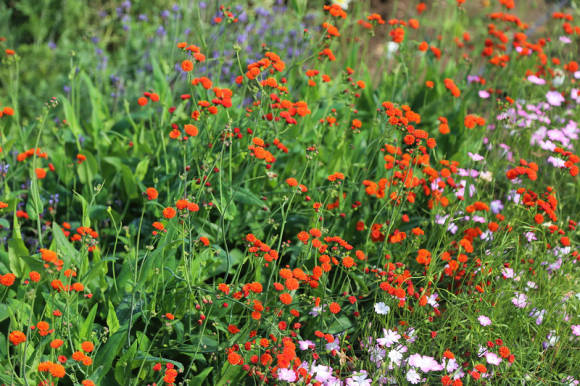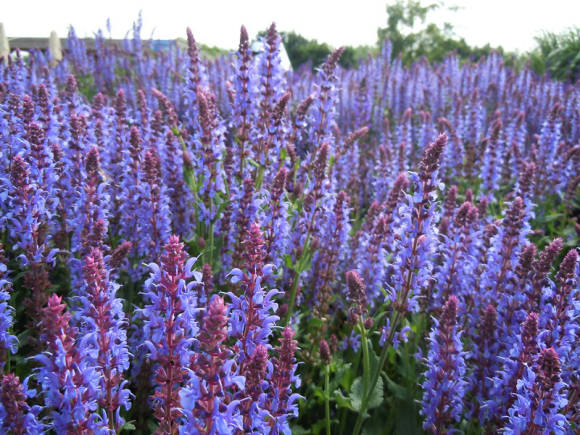A novelty in the vegetable world may well be called curly vegetable beans. Unlike the bush beans we are used to, curly beans can not only give us healthy beans, but also decorate the site well. For example, this variety of beans can be allowed to trudge along a fence, wall of a house or a gazebo. When the harvest time comes, you can remove it, and leave the whips and leaves, and they will decorate the site for some time.
Both bush beans and curly beans grow very actively - it will take only a month after you immerse the beans in loose and nutritious soil, as its shoots will stretch for one and a half, and sometimes even two meters, and will be completely covered not only with elegant greenery , but also fancy flowers. By the way about sowing.
 |  |
Sowing curly beans
Usually, beans are sown in open ground in the central regions of Russia around mid-May, in colder regions - at the end of the last spring month, and in the south - at the very beginning. Before sowing beans, look at the weather forecast to see if a sharp cold snap and return frosts are expected. If yes, then the crops should be postponed, because cold weather can destroy seedlings.
For beans, try to find an area that is protected from the cold wind on the north side, well lit and well heated. The soil should be nutritious and not acidic. If the soil is already tired, then in the fall it is advisable to dig 2-3 kg of well-rotted manure per 1 m2 and 250-300 g of wood ash for the same area.
To sprout beans faster, they can be soaked or germinated before sowing. To do this, take a saucer, pour a little melt or rain water into it to cover the bottom, put cheesecloth folded in 2-3 layers in the water and wait until it is completely saturated with moisture. Next, bean seeds must be laid out on cheesecloth and kept so for a day, turning over to another barrel after 12 hours. If you want the seeds to germinate, then change the water and hold for another couple of days - as a rule, this period of time is enough.
After soaking, sowing - there are two options. If you want to combine business with pleasure, that is, decorate the site and harvest the harvest, then sow beans in the immediate vicinity of the fence, gazebo and other things. If, just for the sake of harvesting, then you will have to install something like a trellis - stick a couple of pegs and pull a wire between them so that the beans do not drag along the ground.
Seeds should be planted in loose soil to a depth of 3-4 cm. It is advisable to spill the grooves before sowing beans with a weak fertilizer solution. For example, a solution of nitroammofoska (a teaspoon per 5 liters of water - per 1m2). After sowing, a maximum of a week will pass, and seedlings will appear on the soil surface. If frosts are expected during this period, then the seedlings can be covered with glass jars or plastic bottles with a cut off top, or with a non-woven covering material.
Curly Bean Care
Further care consists in watering, weeding and feeding.
 |  |  |
Watering... Since curly beans do not like excess moisture, it is advisable to water them only when there is no rain for 3-4 days. Two liters of water is enough for one plant when watering in the evening. Weeding should be carried out regularly, removing all weeds, and combining weeding with loosening the soil.
Top dressing... As for dressing, then a week after germination, you can feed it with nitroammophos by dissolving a tablespoon in a bucket of water. This amount is enough for a couple of square meters of soil. You can re-feed the beans in mid-July, using already half a tablespoon of nitroammofoska and add the same amount to the soil at the very beginning of the last summer month.
It is important - when watering with fertilizers, try not to get on the foliage, otherwise burns may occur and the appearance of the plant will deteriorate.
Formation... Quite an important point in the cultivation of curly beans is the so-called formation. It is necessary to let the shoots on the support as soon as they stretch 25-30 cm, no more, otherwise they will intertwine and it will be difficult to separate them.
Usually laid on a support, with enough food and moisture, the shoots begin to grow actively and quickly reach a length of two or more meters. Upon reaching this length, the crown of the shoots must be pinched in order to direct the food to the formation of the crop and stop further growth.
Harvesting... As for harvesting fruits, the first early varieties give a harvest two months after germination, the later ones - three months. Interestingly, you can harvest until the first frost, unless, of course, we are talking about asparagus beans. (Vigna sesquipedalis), which is usually harvested in one, maximum two doses, without waiting for the pods to overripe and lignify.









